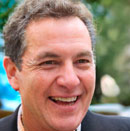Contents
Second generation (Type 4K8; 2018–present)
Second Generation (Type 4K8; 2018–present)
The second-generation Audi S7, designated as Type 4K8, typically incorporates the latest in headlight technology, using LED or Matrix LED systems. These advanced lighting systems do not have traditional bulb sizes as they consist of integrated LED units. LED headlights offer superior illumination, energy efficiency, and a distinctive, contemporary look that aligns with the sleek design of the S7. Some models may also feature laser light technology in conjunction with LED, enhancing the range and intensity of the headlight beam.
First generation (Type 4G8; 2010-present)
First Generation (Type 4G8; 2010–present)
In the first-generation Audi S7, known as Type 4G8, the vehicle is usually equipped with either HID (Xenon) or LED headlights, depending on the trim and optional features selected. For models with HID headlights, the common bulb size is a D3S bulb, known for its intense, white light and long-range visibility. LED headlight models in this generation use integrated LED units, which provide efficient and long-lasting illumination but do not involve traditional replaceable bulbs.
When considering headlight bulb replacements or upgrades for the Audi S7, it’s crucial for owners to verify the specific type of headlight system installed in their vehicle. This can be done by consulting the vehicle’s manual or seeking advice from a professional, especially an Audi-certified technician. For models with integrated LED units, any repairs or replacements typically require professional handling due to the complexity and integration of the lighting system within the vehicle’s design.
See Also
10 Great Cars Similar to Audi S7: Competitors Worth Considering
Audi S7 Engine Swap Compatibility Chart
See More

Consultant in the area of automotive lighting solutions. Previously working as a lighting sales manager for various light bulb brands, collected intensive expertise for effective vehicle lighting & signaling systems that are compliant with the UN regulatory requirements and standards in the United States and Canada.

